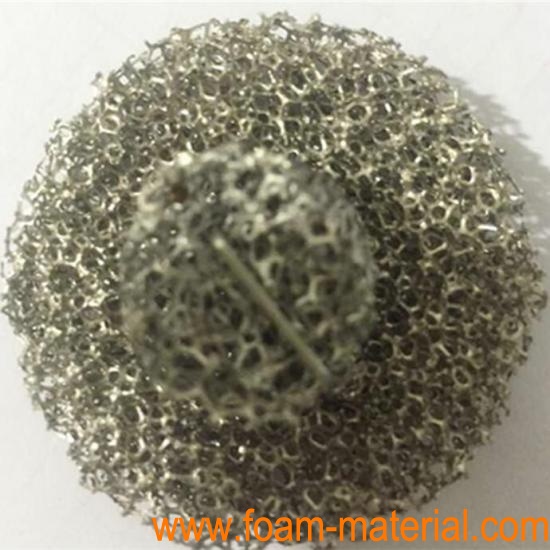Metal foam, specifically referring to Fe (iron) foam, is a fascinating material with a wide range of applications across various industries. It is composed of a network of interconnected metal struts or pores, giving it a lightweight and porous structure. Here’s an overview of Fe metal foam:
Composition and Structure:
Fe foam is typically made by the process of metal powder sintering or by casting a metal alloy with a blowing agent that decomposes during the process, leaving behind voids. These voids create the characteristic porous structure of the foam. The size, shape, and distribution of the pores can be controlled during the manufacturing process, allowing for customization based on specific application requirements.
Properties:
Lightweight: The porous structure of Fe metal foam results in a low density, making it significantly lighter than solid metal counterparts.
High Porosity: Fe foam exhibits a high porosity, typically ranging from 50% to 95%, depending on the manufacturing method and desired properties.
Mechanical Strength: Despite its low density, Fe metal foam can possess considerable mechanical strength and stiffness, especially when the foam structure is optimized for load-bearing applications.
Thermal and Electrical Conductivity: Fe foam retains the thermal and electrical conductivity properties of solid metal, albeit with some modifications due to the presence of voids and pores.
Acoustic Absorption: The porous structure of Fe foam makes it effective for sound absorption and noise reduction applications.
Applications:
Fe metal foam finds numerous applications across various industries, including:
Automotive: Used for lightweight structural components in vehicles to improve fuel efficiency and reduce emissions. It can also serve as a heat exchanger for thermal management systems.
Aerospace: Employed in aircraft and spacecraft components for weight reduction without compromising structural integrity. Fe foam can also be utilized for thermal insulation and acoustic damping in aerospace applications.
Biomedical: Used in orthopedic implants and scaffolds for tissue engineering due to its biocompatibility and porous structure, which facilitates cell growth and tissue regeneration.
Energy: Utilized in battery electrodes, catalytic converters, and fuel cells for energy storage and conversion applications. Fe foam can also be employed as a substrate for catalytic materials in chemical processes.
Construction: Integrated into building materials for insulation, vibration damping, and structural reinforcement. Fe foam can enhance the thermal and acoustic properties of buildings while reducing overall weight.
Future Prospects:
As research and development efforts continue, Fe metal foam is expected to find new applications and witness further advancements in terms of material properties, manufacturing techniques, and cost-effectiveness. Its unique combination of lightweight, strength, and porosity makes it a promising candidate for addressing challenges in areas such as energy storage, transportation, healthcare, and environmental sustainability.
In summary, Fe metal foam represents a versatile and innovative material with significant potential for enhancing performance and efficiency across diverse industries, driving advancements in technology and engineering.
